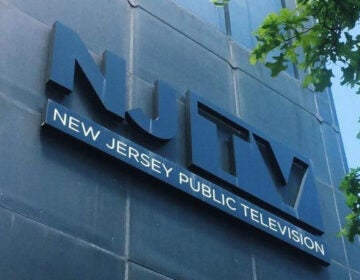The creative financing behind New Jersey’s mega-mall project
This is the fourth installment of Mall Madness, a five-part series on the American Dream retail and entertainment complex under construction in the Meadowlands. The series was produced through a reporting collaboration between WNYC, NJ Spotlight, and Bloomberg Businessweek. The first story, second story, and third story are also available online. The mall is schedule to open in the fall of 2018
Tim Lizura, president and chief operating officer of the New Jersey Economic Development Authority, has more than 20 years with the agency over two different tenures. He also worked on World Trade Center redevelopment for the Port Authority.
Yet he didn’t hesitate to answer, “Yes,” when asked if Triple Five’s American Dream was the most complex state project he’s worked on.
“What makes it complex is the financing that sits behind the analysis,” Lizura said.
Creative financing 101
 That complex financing includes a state sales-tax incentive that could be worth up to $390 million, approved by Lizura’s agency last year. Then there’s a local-redevelopment tax incentive that could be worth up to $800 million. And rather than waiting to redeem those incentives over several decades, Triple Five intends to use them to back more than $1 billion in tax-free municipal bonds that could be sold as early as next month through a public-finance agency in Wisconsin, all to cover construction costs.
That complex financing includes a state sales-tax incentive that could be worth up to $390 million, approved by Lizura’s agency last year. Then there’s a local-redevelopment tax incentive that could be worth up to $800 million. And rather than waiting to redeem those incentives over several decades, Triple Five intends to use them to back more than $1 billion in tax-free municipal bonds that could be sold as early as next month through a public-finance agency in Wisconsin, all to cover construction costs.
 The developer is also planning to raise another $1.5 billion for construction through a private loan, which would run the total price tag of the project up to $5 billion, counting the $2 billion value of a vacant building inherited from prior developers. And a $185 million government-funded rail line that opened in 2009 will carry customers to and from the planned mall, which is located on state-owned property in the Meadowlands.
The developer is also planning to raise another $1.5 billion for construction through a private loan, which would run the total price tag of the project up to $5 billion, counting the $2 billion value of a vacant building inherited from prior developers. And a $185 million government-funded rail line that opened in 2009 will carry customers to and from the planned mall, which is located on state-owned property in the Meadowlands.
Investors not taxpayers assume risks (theoretically)
Triple Five’s attorneys, government-agency lawyers, and other officials say it’s the very complexity of the finance plan — the way the bond sale has been structured and the tax-incentive programs designed — that ensures taxpayers are 100 percent protected if Triple Five to falls flat — as did two of the project’s prior developers. Others take issue with government being involved at all, arguing that Triple Five, which is owned by a family worth an estimated $2.5 billion according to Bloomberg’s Billionaires Index, shouldn’t need tax incentives in a state where property taxes are at an all-time high and priorities like education and public-employees pensions routinely go underfunded.
Bonds needed for the mall to open
The reason Triple Five wants to raise $2.65 billion in new financing is to resume construction on a 90-acre site near the New Jersey Turnpike in East Rutherford, which was left abandoned by two developers when the project was called Xanadu. Triple Five, which owns the Mall of America in Minnesota, renamed its project “American Dream,” and wants to turn it into a three-million-square-foot shopping/entertainment complex, one that will feature a waterpark, amusement park, full-size ice rink, and observation wheel.
But to do so, the developer needs the bond sale to go through. And to get this far that has meant getting approvals from three different agencies in recent months due to the involvement of the state and local-redevelopment incentive programs. The bond issue also survived a legal challenge this summer.
One component of the bond sale involves the financing of payments-in-lieu-of-taxes (PILOTs) that Triple Five has agreed to make to the borough of East Rutherford instead of paying conventional property taxes. Since New Jersey law allows such payments to be used to finance upfront construction costs for priority redevelopment projects, Triple Five plans to back as much as $800 million in bonds using the pledged payments, with a maturity date of 2049, according to a summary submitted to the state Local Finance Board in August.
Another $350 million in bonds will be backed by the up-to $390 million sales-tax break that was approved in 2015 by the Economic Development Authority. To qualify for that tax incentive, the developer had to demonstrate its project would create a net benefit for the state, and that the company couldn’t generate enough financing to finish construction without the state’s involvement. In this case, the incentive is 75 percent of the project’s future sales-tax revenue over two decades.
What Wisconsin has to do with this
The combined $1.15 billion in unrated revenue bonds will be sold through a two-step process involving the New Jersey Sports & Exposition Authority and the Wisconsin Public Finance Authority. The Wisconsin agency — located nearly 1,000 miles from the Meadowlands — is legally authorized to issue tax-exempt bonds for projects that aren’t required to be within its borders. According to Bloomberg, the agency has become a popular partner for projects across the country that provide some kind of social or economic benefits and are willing to pay fees for the issuance of tax-exempt bonds.
Assessing the risks of the bonds
Yet the bond sale has already been delayed several times this year, and there are several issues that could give investors pause. The American Dream site stands on slightly higher ground in the Meadowlands than other parts of a region commonly referred to as a swamp, but a climate-change report released just last week by the Regional Plan Association warns that critical infrastructure running through the Meadowlands could be threatened by three feet of sea-level rise — a scenario that scientists believe could happen as soon as the 2080s. A map released by the RPA also suggests American Dream could eventually become an island surrounded by a large saltwater bay.
Another possible concern for investors is an issue raised by the Federal Reserve Bank of New York in research published online in 2012 about municipal bonds, which are generally considered to be safe if unspectacular investments. The research noted defaults for municipal bonds are higher than is often reported by rating agencies because unrated bonds are usually not factored into their assessments. The report also labeled revenue bonds such as those being sold by Triple Five as being particularly risky compared with government general-obligation bonds, which are typically backed directly by tax revenues.
What is Triple Five risking?
Christopher Leinberger, an experienced developer who chairs George Washington University’s Center for Real Estate and Urban Analysis, also raised questions about how much of its own cash equity Triple Five is putting on the table. According to documents submitted to the Economic Development Authority, that amount appears to be $200 million, but Tony Armlin, Triple Five’s vice president, said it’s actually north of $350 million.
Still, even the higher amount remains just a small fraction of the overall $2.65 billion that Triple Five is trying to raise from investors to complete the development project.
“I’ll make the prediction that there will be a recession, and when it comes — I just can’t tell you when — when it comes, this project is going to have some very lean years as far as the revenues that it generates,” Leinberger said. “To carry it through those lean years you need more than 10 percent equity in the deal. That’s why banks are demanding 20 percent to 40 percent equity.”
But Armlin has stressed at government meetings in recent months that there is absolutely no risk being placed on the state or the taxpayers by Triple Five’s bond issue. Instead, he said the risk is entirely on the investors because the bonds are being sold as a “non-recourse,” issue. That means the lenders will have no grounds to go after taxpayers if the project doesn’t take off, but it also means they will expect a higher yield.
“Triple Five’s project has been completely transparent and fully satisfied every local, state, and federal approval required,” Armlin said during a New Jersey Sports & Exposition Authority meeting in September.
Tax incentives similar to Revel deal
Lizura, the EDA executive, said there are also protections built into the state tax incentives themselves. He said the tax breaks approved by his agency will never make it to Triple Five unless the project opens and is profitable. As an example of how they work, he pointed to a $261 million tax-incentive package approved for the failed Revel casino in Atlantic City in 2011. Because the casino went belly up, it never redeemed its tax breaks.
“I think we would have been better off if it operated, for sure, because the state would have gotten a bunch more money and we would’ve given some of that back, but there’s really no public money at risk in the way the program is run,” Lizura said.
Triple Five representatives have also pushed back strongly against claims that the developer is getting a sweetheart property tax break through its deal with East Rutherford. The borough will still be receiving an upfront payment of $21.5 million, and then $2.7 million per year through the agreement even as the investors are also paid off, Triple Five’s representatives said. They also note that it was a previous developer that struck the deal to move the mall from a privately owned tract to the state-owned sports complex.
“No real estate taxes are being diverted from the State of New Jersey or the Borough of East Rutherford,” Triple Five’s statement said.
East Rutherford Mayor James Cassella also offered assurances that borough taxpayers are completely protected, even against a lawsuit if the developer ends up going under. And he said the borough won’t have to provide the complex with police or other emergency services in return for the PILOTs. The state police are in charge of patrolling the sports complex, and the Sports Authority has a Meadowlands Fire Department.
“There isn’t much you could sue us on because we didn’t conceive this, give any money to it, or whatever,” Cassella said. “We’re just saying if you open up, you’re going to pay us,” he said.
But Jeff Tittel, director of New Jersey’s Sierra Club and a longtime critic of American Dream’s tax incentives, said the bigger issue is what else could be done with the tax revenue that has been pledged to Triple Five to help fund its construction costs. “All of this money could clearly be better spent on building new schools, taking lead out of our drinking water, and cleaning up our toxic sites,” Tittel said. “This is clearly one of the biggest sellouts and largest subsidies in state history.”
John Reitmeyer is the budget and public finance writer for NJ Spotlight. Ilya Marritz is a reporter/producer for WNYC. Susan Berfield is a reporter for Bloomberg Businessweek.
The Mall Madness series continues tomorrow with a closer look at politics and the American Dream project, including campaign contributions from lawyers, government officials and others involved in the project. The series was produced through a reporting collaboration between WNYC, NJ Spotlight, and Bloomberg Businessweek.
NJ Spotlight, an independent online news service on issues critical to New Jersey, makes its in-depth reporting available to NewsWorks.
WHYY is your source for fact-based, in-depth journalism and information. As a nonprofit organization, we rely on financial support from readers like you. Please give today.











